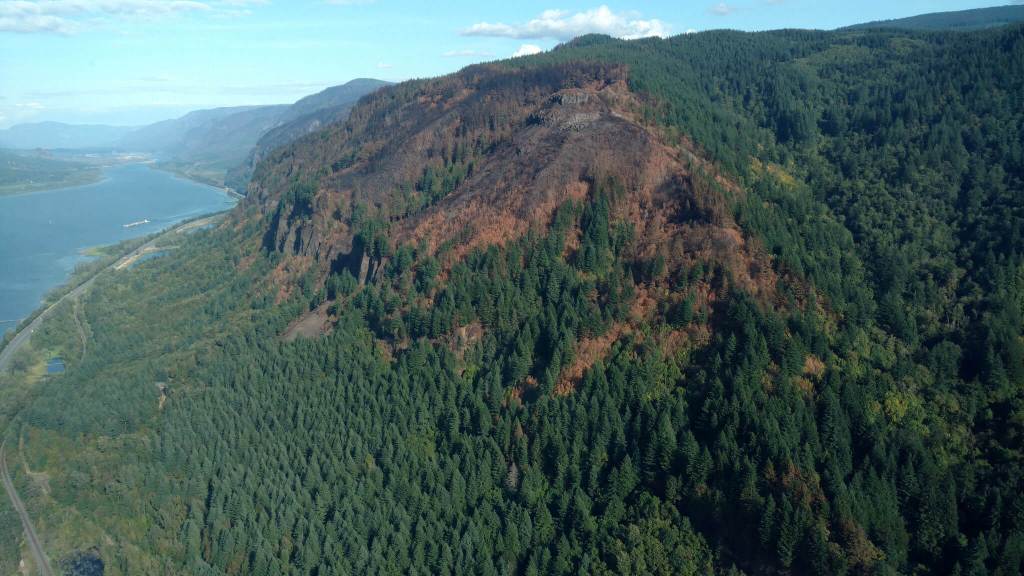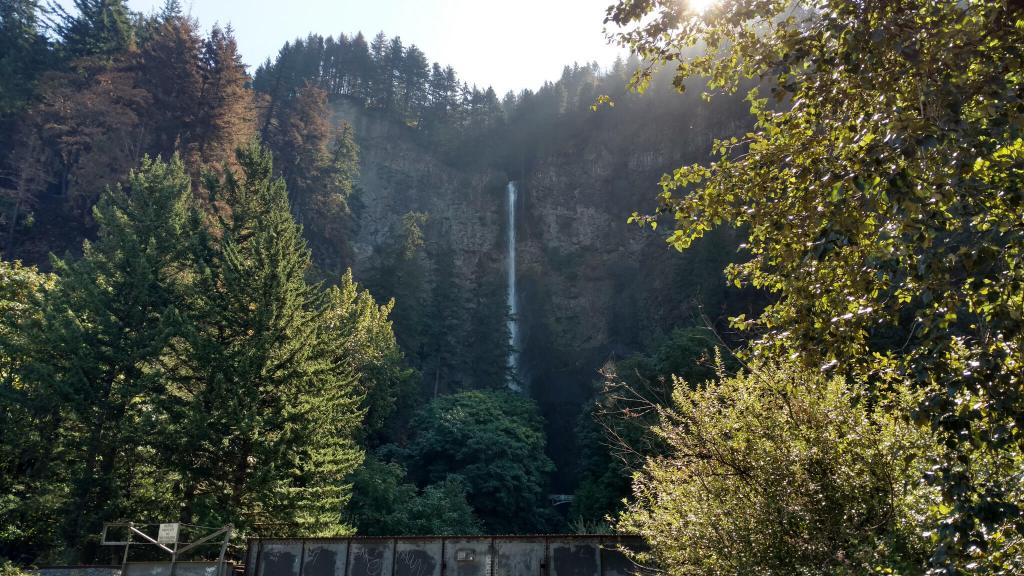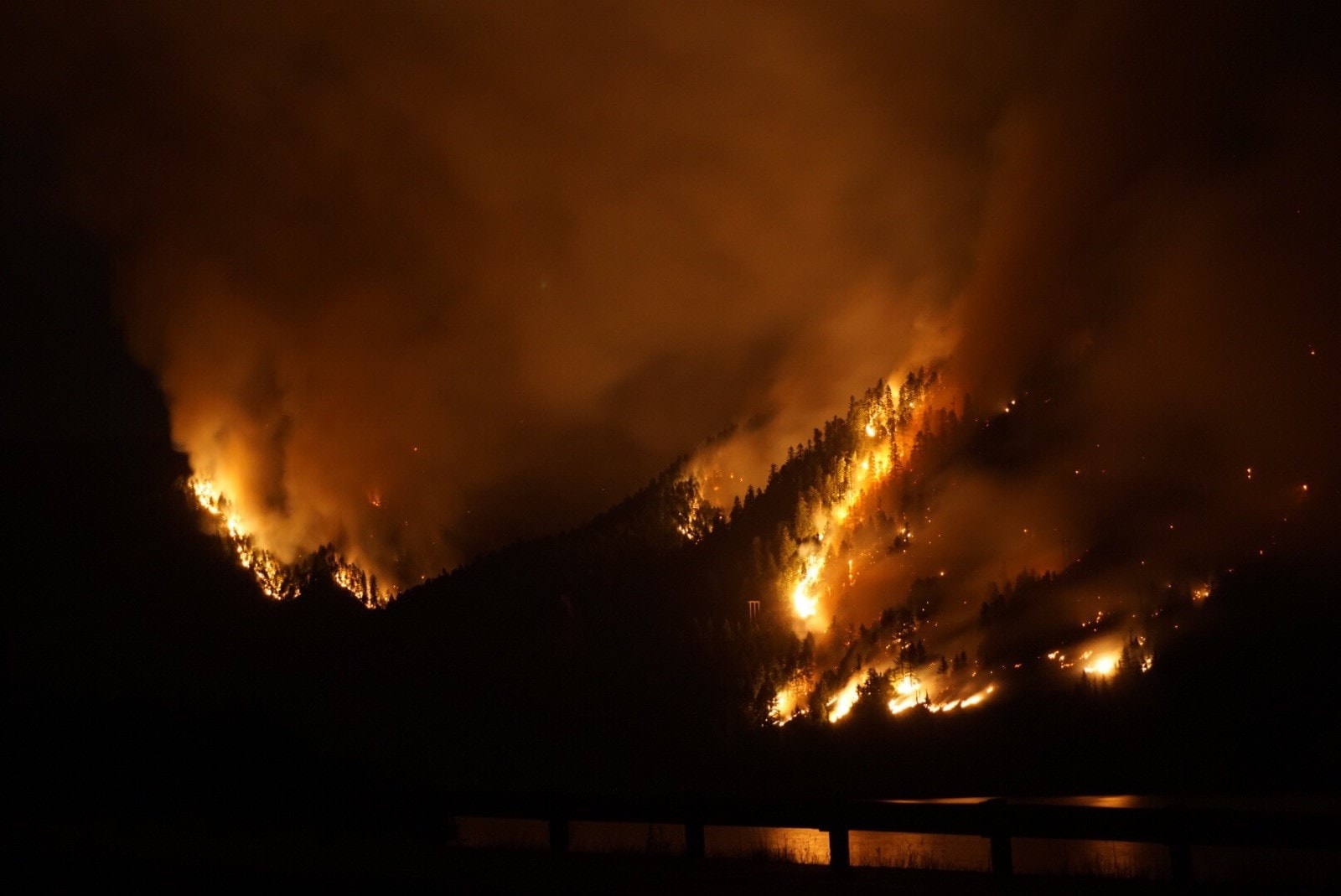By the time summer sun gave way to fall rains in Oregon, it was clear the state had experienced one of its worst-ever years for wildfires. According to the Oregon Forest Resources Institute, wildfires charred more than 665,000 acres in 2017—nearly equaling the size of the state of Rhode Island—all at a cost of $454 million.
Most of the summer wildfires struck remote wildernesses, but one of the largest, most visible blazes ignited just 40 miles east of Portland—in the heart of the Columbia River Gorge, on September 2, 2017.
A teen—15 years old at the time—admitted to throwing the fireworks that started the fire, which ultimately threatened numerous lives, along with some of the most popular destinations and communities in the Columbia River Gorge. The charges stem from the teen “tossing a couple of fireworks while hiking on the Eagle Creek trail,” according to court documents. The U.S. Forest Service (USFS) says the Eagle Creek Fire burned more than 48,000 acres and forced the closure of 116 miles of trail in the Columbia River Gorge National Scenic Area and surrounding national forest lands.
In May 2018, a Hood River County Circuit Court judge ordered the teen to pay $36.6 million in restitution (although the debt will be considered paid in 10 years if the teen completes probation, does not commit additional crimes and complies with a payment plan).
Many of the Gorge’s best-loved trails remain closed—and aren’t expected to open for several months. So as you plan your springtime and summer hikes, here’s what to know about the fire’s impact on the Gorge, what to expect over the coming months, and how the fire may ultimately lead to a new era in Oregon tourism.

The Eagle Creek Fire burned more than 48,000 acres of the Columbia River Gorge, including Angel’s Rest, one of the most popular vistas in the 85-mile Gorge. (Photo Credit: U.S. Forest Service)
Future of the Forests
Hikers have long enjoyed the Columbia River Gorge. Some of its walls tower 1,000 feet or more above the Columbia River and, according to Russ Jolley’s book Wildflowers of the Columbia Gorge: A Comprehensive Field Guide, more than 700 species of wildflower bloom throughout the 85-mile-long Columbia River Gorge National Scenic Area. Multnomah Falls, among the dozens of waterfalls within the region, draws four million visitors each year, making it one of the state’s most popular tourist attractions.
Yet the forests hikers know and love will never again exist as most people remember them, at least not within their lifetime, says John Bailey, a forest scientist with Oregon State University. The Eagle Creek Fire initially closed more than 100 miles of trails (more on that later) and set the stage for winter mudslides that may take years to mitigate—but experts say it’s not all bad.
“It was far from ruined,” Bailey says. Hikers will certainly walk through areas of high severity fire—meaning, masses of trees were outright killed—but the burn generally followed a mosaic pattern. Mixed in with those burned-out areas were patches of low to no severity fire activity, where Bailey says, “You’ll forget that you’re walking within a fire.” These patches of forest, mostly still green, will help spur recovery in the neighboring burned-out patches going forward.
In all, Bailey estimates that roughly a third of the 48,000-acre burn was high severity, meaning hikers might encounter more greenery than they’re currently anticipating. “They’ll be pleased with how much green is still out there,” he says.
Even in areas where the burns wiped out large swaths of trees, shrubs and foliage, Bailey encourages hikers to find the silver lining. “It’s going to be beautiful in its own way, in terms of wildflowers, butterflies, new vistas and the ecological recovery as you walk through there,” he says.
How Hikes Have Been Impacted
First the good news: There are still plenty of doable hikes on the Washington side of the Gorge, which remained mostly unscathed. Hikers are already flocking to Dog Mountain’s wildflower meadows, Cape Horn’s panoramic views and the grueling Hamilton Mountain trail as hiking season gets underway.
The prognosis for your favorite trail on the Oregon side of the Gorge is, unfortunately, a bit murkier.
In October 2017, the Forest Service’s Burned Area Emergency Response Team unveiled its report about the severity of the burn and hazards. Following those recommendations, the agency has worked for months to stabilize roads, remove hazardous trees, remove the Eagle Creek suspension bridge (which was damaged in the fire), install warnings signs and put in place rockfall fencing above Multnomah Falls Lodge to protect the historic structure.
But for all the agency’s work, don’t expect to hike the likes of Angel’s Rest or the Wahkeena Trail this summer.

The Angel’s Rest Trail was among the areas most impacted by the Eagle Creek Fire. (Photo Credit: U.S. Forest Service)
Various regions of the Columbia River Gorge are expected to open gradually throughout the year, according to Lillian Palmer, public affairs specialist with the USFS. (Note that all estimates are weather-dependent.)
The USFS aims to reopen the westernmost area of the Gorge—between Multnomah Falls and Portland—by December 2018. Popular trails in this area include Angel’s Rest and the Larch Mountain Trail. (Note that some trails in the western edge of the Gorge, such as Latourell Falls, are already open.)
The Forest Service hasn’t yet established a timeline for reopening trails between Multnomah Falls and Cascade Locks—an area hosting many of the Gorge’s most popular hikes, including Eagle Creek, Wahclella Falls, Horsetail Falls and Oneonta Gorge. The wildfire originated in this area, and Palmer warns about the potential for landslides and debris flow. “We haven’t gotten in there to assess conditions and bridges,” she says.
Heading east from Cascade Locks, Palmer says the Forest Service hopes to open up the remaining trails this summer. Several popular trails in this area weren’t burned through so severely, and crews have already done extensive trail restoration to improve conditions. A few trails in this area, including the Mount Defiance and Starvation Ridge trails, as well as several short hikes leading to lakes in the Mt. Hood National Forest—including Black, North and Warren Lakes—reopened in May 2018.
Wherever hikers wish to go, Palmer suggests checking with the USFS website on fire closures and restrictions within the Columbia River Gorge before heading out. “It’s important that people understand that trails aren’t closed because of downed trees,” she says. “Some of those trails, you can’t even see anymore, because there’s been so much rockfall.”
The prolonged closures present a unique opportunity to rebuild some of these trails to withstand increased popularity, according to Renee Tkach, project manager for the Gorge Towns to Trail effort at Friends of the Columbia Gorge. Tkach points to the now-charred Eagle Creek Trail as an example. According to Tkach, the Eagle Creek Trail was constructed a century ago and wasn’t built to withstand modern demands. When people talk about the Columbia River Gorge being “loved to death,” they’re tacitly imagining Eagle Creek’s overcrowded parking lots and single-file lines that bottleneck at some of the trail’s most popular vistas.
So, as government agencies and advocacy organizations look at rebuilding key trails in the wake of both wildfires and winter weather, they’ll have the rare opportunity to assess and account for the region’s explosive popularity: “We have the opportunity to rebuild these trails in a fashion that gives them the ability to be sustainable for the next 100 years,” Tkach says. “We have some opportunities, and the timing is right.”

The Eagle Creek Fire burned much of the forest surrounding Multnomah Falls, but fire crews were able to preserve the historic Multnomah Falls Lodge. (Photo Credit: U.S. Forest Service)
Reimagining Tourism
Tourism is big business in the Columbia River Gorge, and, until the Eagle Creek Fire, it had been growing. Visitors spent $421 million on trips to Mt. Hood and the Columbia River Gorge in 2017, up from $290 million in 2010, according to a 2018 study prepared for Travel Oregon, the state’s tourism agency. In all, that amounts to a 45 percent growth in travel expenses.
It’s too early to say what kind of impact the fires will have on the 2018 tourist season, but some see an opportunity to reimagine the relationship between the region’s delicate beauty and throngs of visitors.
Specifically, Tkach says the fire gave travel planners the chance to step back, pause their efforts and reassess their work—all with the goal of creating a new experience that steers visitors away from well-worn destinations.
Tkach is a member of the Columbia Gorge Tourism Alliance, which convened before the Eagle Creek Fire to reexamine how to best promote the Gorge as a sustainable destination. Those conversations obviously took on a different significance as the fire grew, and planners are now grappling with an uncertain future.
One idea, which had been discussed prior to the fires, might be to more aggressively promote some of the smaller towns that might be otherwise overlooked as tourists visit the Gorge.
The opening salvo in that effort came in fall of 2017 when roughly 20 Gorge communities teamed up for the “Show the Gorge Some Love” campaign. The effort showcased the region’s restaurants, art galleries, boutique shops and the Hood River County Fruit Loop (a 35-mile scenic drive through the Hood River Valley’s orchards, forests, farmlands and communities).
Whatever happens, Tkach sees the rare opportunity to start anew and think critically about how to serve tourists from throughout Oregon and around the world. “Out of the ashes, these phoenixes are kind of rising,” she says.


